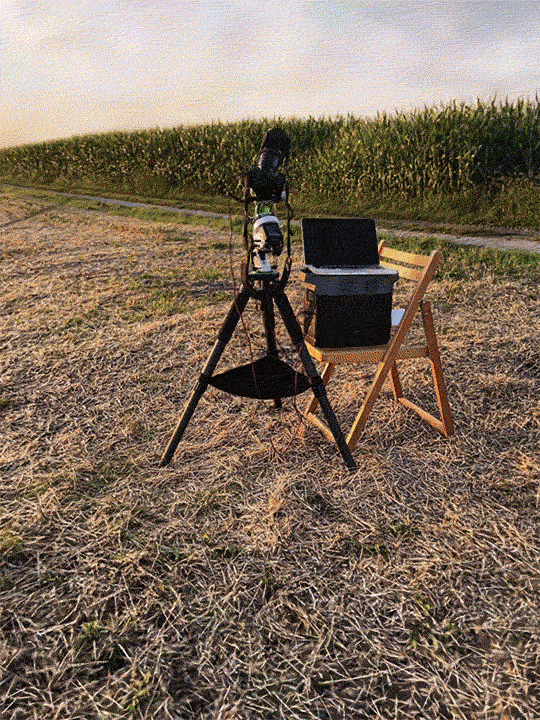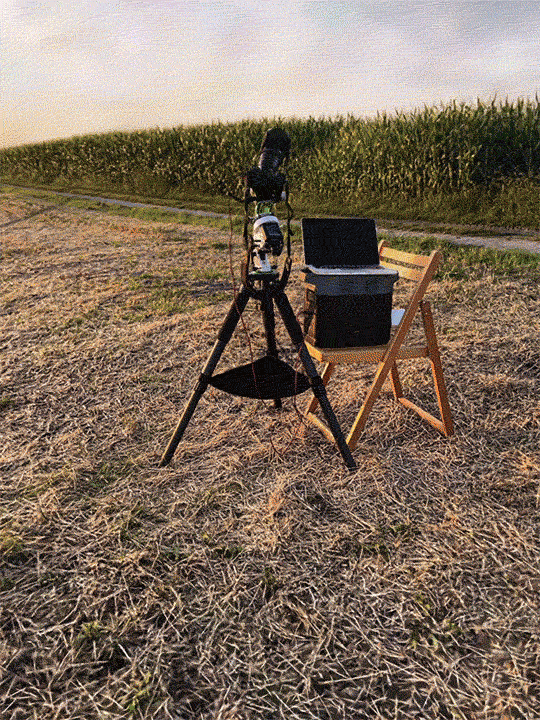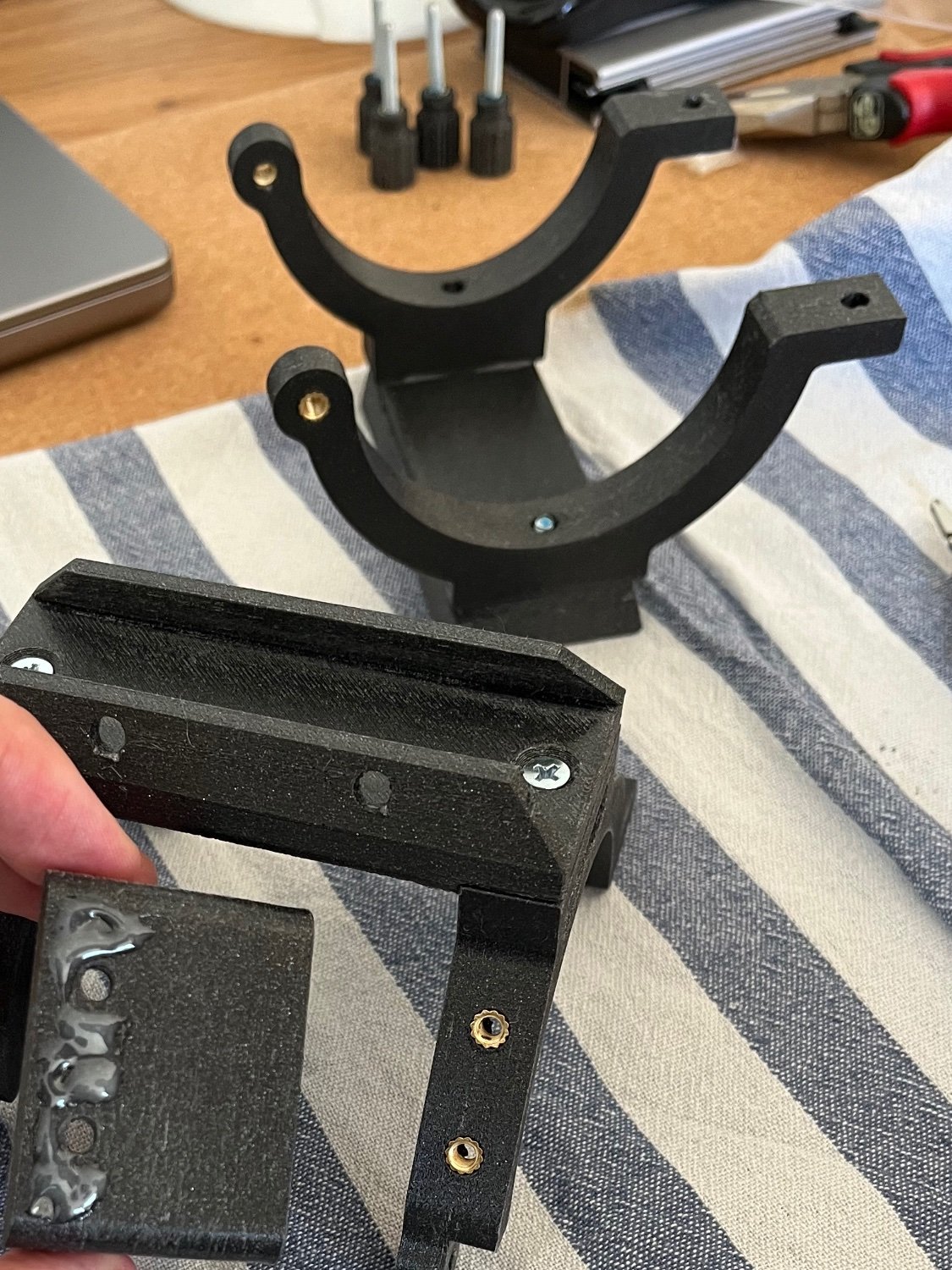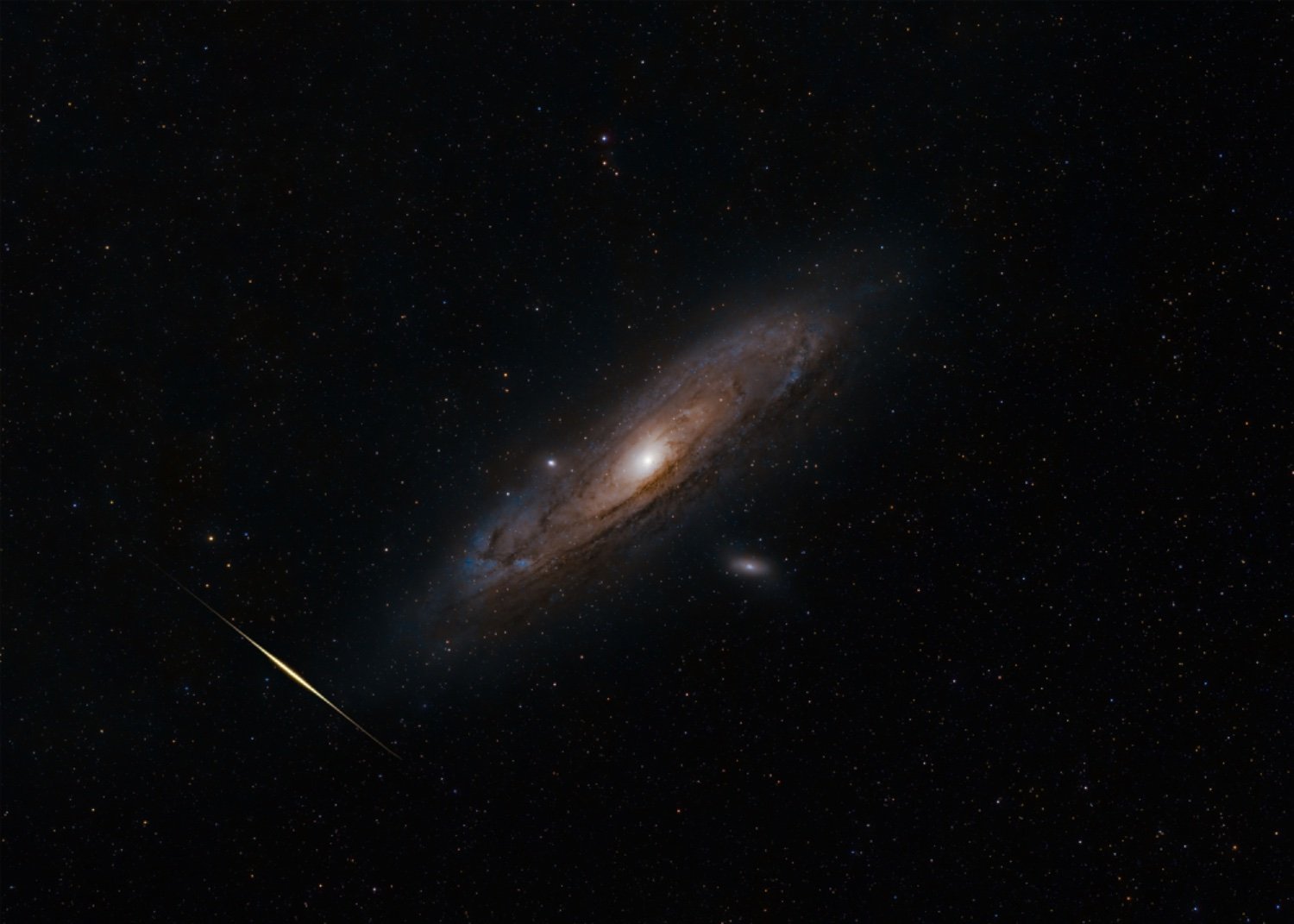I couldn’t agree more, thank you for sharing so much information!
We were in exactly the same situation and bought a Fuji camera. We are very happy with our decision as we can shoot both 'normal' photography with the feeling of a nice camera body and astrophotography on a beginner level.
The results we got so far exceeded our expectations by far, we posted some of our images here in this sub or here in full resolution .
One thing to keep in mind is that normal cameras block most of the infrared light, which makes it unsuitable for shooting hydrogen nebulae. That's a minor reason why we eventually chose a Fuji camera, as they filter a bit less infrared than other brands.
In the end the biggest impact makes the lens/telescope. After a lot of research we chose the Samyang/ Rokinon 135mm f2.0 lens. Also we found it very rewarding shooting with such a 'small' focal length because it forgives minor inaccuracies while giving very good results.
For us the biggest reasons for this hobby are to experience the night sky with our own equipment and learning very much (about physics, processing the data, cameras, ...). Both things can be achieved with modest equipment and I would keep that in mind when comparing own images with others. Also I personally love the challenge to get the best possible results with things you already have.
Hope that helped a bit.
Full resolution image and more details here
Also this is what our setup looks like to shoot such an image:


We shoot this image over two nights to reveal the faint structures of the veil nebula complex.
Shot with a 135mm lens and a Fuji X-T5.
Also this is a 3d animation of our setup used to shoot this image:


We finally got two clear nights and although the moon was really bright, this target came out quite well due to the narrowband filter.
Equipment:
- Samyang 135mm f2.0
- Fuji X-T5
- Star Adventurer 2i
- Duo narrowband filter
Images:
- 466 x 60s lights
- ISO 3200
- @f2.8
Editing:
- Stacking with drizzle in Siril
- Background removal in GraXpert
- photometric color calibration in Siril
- BlurXTerminator
- 0.3 denoising with BlurXTerminator
- Star removal
- Stretching in Siril with GHST
- final composing in Photoshop (saturation, contrast, blending with stars)
Full resolution and more details: https://telescopius.com/pictures/view/198606/deep_sky/ngc-6974/veil-nebula-complex/by-maxi_franzi
I can recommend this online telescope simulator where you can simulate the field of view with your equipment. Your 300mm lens should be absolutely perfect
This lens is incredibly sharp and produces nearly no coma. Also the image is super flat and the lens also works for full frame cameras. For its high image quality it‘s also used by some more advanced astrophotographers.
As I bought it new for 400€ this was a no brainer because we can also use it for 'normal' photography.
I‘m sure your lens works well for many nebulae!
Thank you! Andromeda is way bigger than most people think. That’s the reason why it is a very (maybe the most) popular target for beginners. Also there went a lot of processing into the image, so don’t let the image deceive you from the actual conditions where I live (Bortle 5 zone)
The lens is the telescope in this case. But as the focal length of 135mm is fairly short it works best for objects appearing very large in the sky. Astrophotography can get very expensive very quickly, so we try to make the most out of the equipment we have. Just like with the 3d printed mount.
The Samyang 135mm f2.0. In some markets it‘s also called Rokinon
Thank you! I agree, it really is an amazing topic.
Glueing and screwing the parts:

One result shot with this mount (and many other accessories):


I found this design and it fitted my need perfectly. It is a mount for a very popular camera lens used in astrophotography. It not only functions as a weight relief for the camera but also allows to rotate the field of view. Moreover it is possible to focus the lens with the installation of a stepper motor, which will be the next step.
The single parts are screwed together with the help of threaded heat inserts. Just to make sure they are also glued together with epoxy, as the mount really needs to hold up. The screws are locked with Loctite.
Edit: Link to the mount (not my design): https://www.thingiverse.com/thing:6099113
Very interesting, thank you for sharing. Your linked gif makes it very apparent that it was indeed a satellite.
I also searched in Stellarium and found a decommissioned military satellite called STSS Demo 2 that fits the path and time stamp perfectly.
-9 magnitude is insane, must’ve been a very cool sight.
Ha, thanks for letting me know. I didn’t know satellites can create flares like this. As all the other satellites were so dim I assumed it had to be something different.
For editing I chose the single sub with the flare and screen blended it in photoshop.

We got a lucky shot of Andromeda with a meteor crossing our view.
Apparently we shot a satellite flare next to Andromeda.
Images:
- Samyang 135mm @2.8
- Fuji X-T5
- Star Adventurer 2i
- 465 x 30s
- ISO 200
Processing:
- stacking, stretching, background extraction and star separation in Siril
- final composition in Photoshop

Although the seeing was not great we managed to get our first shot of the region around Sadr.
Equipment:
- Samyang 135mm
- Fuji X-T5
- Star Adventurer 2i
- STC Clip In filter (multi narrowband)
Images:
- 296x 30s
- ISO 800
- f2.0
Editing:
- stacking and stretching in Siril
- BXT
- gradient removal and denoise in Graxpert
- final editing in PS
Full resolution and more infos: https://telescopius.com/pictures/view/192523/deep_sky/crescent-nebula/NGC/6888/diffuse-nebula/by-maxi_franzi

Equipment:
- Samyang 135mm
- Fuji X-T5 (unmodified)
- Star Adventurer 2i
- STC Clip In Filter
Images:
- 318 x 30s
- ISO 800
- f2.0
Editing:
- Siril for stacking and stretching
- Graxpert Background removal & denoise
- BXT
- Photoshop for final editing
Full resolution and more info: https://telescopius.com/pictures/view/192387/deep_sky/omega-or-swan-nebula/M/17/diffuse-nebula/by-maxi_franzi
Beautiful, thanks for sharing!
In March, the European Commission, the EU's executive arm, opened a probe into Apple, under the new Digital Markets Act legislation.

According to a British report, Apple is to be the first tech company to be penalized for misconduct when opening the App Store.


Whirlpool galaxy shot at 135mm.
Equipment:
- Samyang 135mm f2.0
- Fuji X-T5
Images:
- 723 x 60s
- ISO 400
Full resolution: https://telescopius.com/pictures/view/188842/deep_sky/whirlpool-galaxy/M/51/galaxy/by-maxi_franzi

Wide field shot of the virgo cluster.
Equipment:
- Samyang 135mm
- Fuji X-T5
- Star Adventurer 2i
Images:
- 387 x 30s
- ISO 400
- f2.0
Full resolution and more info: https://telescopius.com/pictures/view/188443/deep_sky/markarian-chain/galaxy/by-maxi_franzi
Yes processing the image plays a huge role.
But at the end you can only work with the information provided by your equipment as there are physical limitations on what one can capture.
To me the most interesting part of this hobby is to learn what you physically really have to do to get good images. Physics not only plays a role on understanding what we see in these images but also on how to make them.
Truly fascinating!
While there are tools like generative AI models to invent images like this, in astrophotography it is very important only to use tools which don‘t invent any new information.
The only tool which is debatable is denoising with AI, as it really creates information learned from other images. But even here there are ways to prevent this.
Imo at the end we want to capture whats really out there, not what there could be
I mean, I literally just put the phone on the roof of my car and leaned it against my wallet. It was just an experiment because I wanted to know whats possible with just a phone
Ha thanks, didn’t expect such nice comments for such a bad image. Yes I also was blown away that the nebula is barely noticeable, even with smartphones strong IR filters

Hope this low effort post is accepted, I just wanted to share my first image when I started.
There was no telescope or tracker used, just a smartphone leaned against my wallet.
Images:
- ~400 x 1s
- ISO 3200
Editing:
- stacking/ stretching in Siril
- GraXpert for gradient and denoising
- BlurXTerminator for deconvolution
- Starnett++ to edit the barely visible nebula a bit better
- final editing in Photoshop

As we didn’t find any shelf of our liking we tried to create it ourself. It worked out better than expected, however it obviously isn’t perfect. But as completely laymans we are happy nonetheless.
One cool feature is that through all pieces goes one straight hole, this allows putting lamps on the shelf without seeing any cables.

cross-posted from: https://lemmy.world/post/14024670
> M51 > > This was shot under extremely poor conditions with lot of clouds. > So this is just a practice shot, but we try to get the best results with the equipment we have, so we will visit this target again with good seeing. > > Equipment: > - Fuji X-T5 > - Samyang 135mm > - Star Adventurer 2i > > Images: > - 217x 60s > - ISO 125 > > More info here: > https://telescopius.com/pictures/view/185140/deep_sky/whirlpool-galaxy/M/51/galaxy/by-maxi_franzi

This was shot under extremely poor conditions with lot of clouds. So this is just a practice shot, but we try to get the best results with the equipment we have, so we will visit this target again with good seeing.
Equipment:
- Fuji X-T5
- Samyang 135mm
- Star Adventurer 2i
Images:
- 217x 60s
- ISO 125
More info here: https://telescopius.com/pictures/view/185140/deep_sky/whirlpool-galaxy/M/51/galaxy/by-maxi_franzi

This is just a test shot to see how much detail can be captured using the 135mm Samyang lens. I think with way more exposure time and proper polar alignment the details can be further improved.
- Fuji X-T5
- Samyang 135mm f2.0
- 400x 15s
Obviously with a real telescope the result would be way better, but as a beginner I first try to push my equipment I already own.

This was a very challenging target for us as we are still beginners, but the comet stands out nicely. We hoped for a bit more detail, but shooting with the Samyang 135mm lens is quite a strech for this target.
Equipment:
- Samyang 135mm f2.0
- Fuji X-T5
- Star Adventurer 2i
Images:
- 400x 15s
- ISO 400
More infos here: https://telescopius.com/pictures/view/183073/comet/by-maxi_franzi

My first try at IC 1805 with my stock Fuji XT camera. Turned out way nicer than I could’ve imagined.
equipment:
- Samyang 135mm f2.0
- Fuji X-T5 (unmodified)
- STC duo-narrowband clip-in filter
- Star adventurer 2i
frames:
- 550x 60s
- ISO 1600
- f2.8
editing:
- stacked in Siril
- background removal with GraXpert
- editing in Photoshop
More infos on Telescopius: https://telescopius.com/pictures/view/178053/deep_sky/heart-nebula/IC/1805/diffuse-nebula/by-maxi_franzi
If anyone knows what causes the elongated star shape in the top left corner please let me know. I tried to get the focus as perfect as possible.

This is my second try at the Andromeda galaxy. This image is shot with an ordinary camera and lens, though the work behind the image is much more than point and shot. The total exposure time is a bit more than 2 hours. For anyone interested in the workflow and equipment:
- Samyang 135mm f2.0 lens
- Fuji XT-5
- 410 images shot @20s exposure time
- calibrated and stacked in Siril
- background extraction with GraXpert
- star removal with Starnet++
- stretched in Siril with GHST and levels in PS
- final editing, star recomposition and cropping in PS

